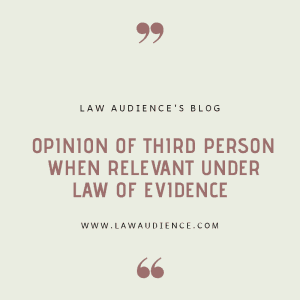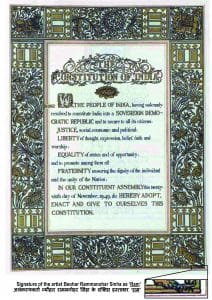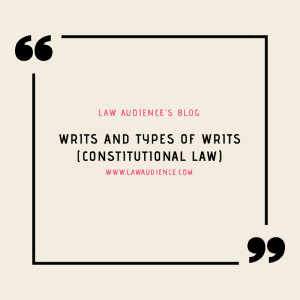AUTHORED BY: MS. RISHITHA.K, B.B.A.LL.B, 3RD YEAR STUDENT AT IFIM LAW COLLEGE & RESEARCH WRITER AT LAW AUDIENCE
INTRODUCTION:
Vigilantibus Et Non Dormientibus Jura Subveniunt[1] is the basic cardinal principle of the Limitations Act. The judiciary wanted to achieve three things: 1. to delimit the number of unnecessary litigations, 2. to compel a person to exercise his right properly within a reasonable time, 3. to discourage and suppress fake, fraudulent, frivolous and vexatious claims. This Act fixes or prescribes certain period of time for the institution of suits. It puts a bar on legal actions.
Limitation Act can be explained more clearly with an example. Let us consider a situation where A received 2 lakhs from B as a debt on 20th of October 2018. A promised to repay the debt of 2 Lakhs by 20th of October 2020. A fails to repay the money, B fails to follow up regarding the repayment of the money. After 15 years, B asks A to repay the debt. A refuses, B files for a suit. In such cases, the court considers the time of cause of action and the institution of suit, if the court finds that there has been an unreasonable gap then the court dismisses the suit of the petitioner. This is the concept of the Limitations Act.
This Act extends to whole of India except in the state of Jammu and Kashmir. Part- II of the Act emphasizes on the limitation of suits, appeals and applications. This Part comprises of 8 sections i.e. from section 3 to section 11.
SECTION 3: BAR OF LIMITATION:
Clause (1) of the section states that every suit instituted in the court of law after the prescribed period[2] is to be dismissed though the defence doesn’t raise an additional issue with regard to the limitation of the suit. The clause implies that it is the duty of the court to observe and dismiss the case if it exceeds the prescribed period. Clause (2) of the section elaborates on the instances when the suit is said to be actually instituted in the court of law.
SECTION 4: EXPIRY OF PRESCRIBED PERIOD WHEN COURT IS CLOSED:
If there arises a situation when the prescribed period for any suit, appeal or application expires on a day when the court is closed, then the person can make an application or appeal at the time when the court reopens again.
SECTION 5: EXTENSION OF PRESCRIBED PERIOD IN CERTAIN CASES:
If the appellant or the applicant is capable of proving in the Court that he/she had sufficient cause for not being able to appeal or apply a suit in the court the law, then the court might accept the appeal or application even after the expiry of the prescribed period. The limitation period won’t be considered, if there was an error in assessing the prescribed period by the court.
SECTION 6: LEGAL DISABILITY:
This particular section enunciates on the limitation of suits and applications with respect to disabled persons.
Clause (1) of the section states that a person who is a minor, insane or an idiot can institute a suit, appeal or application once the disability ceases. In case of a minor, he/she can institute a suit, appeal or application once he/she attains the majority but has to apply within three years from the date of majority.
Clause (2) of the section states that if a person is suffering from two disabilities, then they can institute a suit once both of their disabilities are cured. Clause (3) if the disability ceases after the death of the person then the representatives of the person can institute a suit on behalf of the person. Clause (5) if a person dies after the disability ceases but within the limitation period, then the representative must institute a suit within the limitation period.
SECTION 7: DISABILITY OF ONE OF SEVERAL PERSONS:
If a group of persons are supposed to institute a suit, the limitation period starts even if one of them is capable of instituting such suit. If there arises a situation wherein nobody is capable of instituting the suit then the limitation period comes to a standstill. Until disability ceases at least for one person the limitation period never starts.
SECTION 8: SPECIAL EXEMPTIONS:
This section is an exception to Sections 6 and 7. This sections states that none of the clauses of sections 6 and 7 will be applicable in case of enforcement of rights of preemption. In case of minors and dead persons, three years after the attainment of majority and death of person the suit is to be instituted.
SECTION 9: CONTINUOUS RUNNING OF TIME:
It is been stated in this section that once the limitation time has begun to run no disability or no death can stop the running limitation time. Unless the letters of administration are granted to the debtor by the creditor, then the period of limitation to recover the debt shall be suspended while the administration continues to exist.
SECTION 10: SUITS AGAINST TRUSTS AND THEIR REPRESENTATIVES:
There is no bar in time when a suit is to be instituted on a trustee or the representatives of a trust. The limitations Act doesn’t give the immunity of limitation of suits in such cases.
SECTION 11: SUITS ON CONTRACTS ENTERED INTO OUTSIDE THE TERRITORIES TO WHICH THE ACT EXTENDS:
This section mainly discusses about the extension of jurisdiction of the limitation act on the other states. If the contract is entered in any part of the territories of India where the Act is applicable, then the provisions of this Act would apply irrespective of the country where the other party belongs to. This Act won’t be applicable in two cases: 1. when the rule is extinguished by the contract. 2. When the parties resided in other country during the prescription of such rule.
CONCLUSION:
Thus, the Limitations Act indirectly punishes the lethargic that don’t exhaust their legal remedies in the right time. This Act acts as a remedy in case of overburdening of cases in the court of law.
[1] The law assists those that are vigilant with their rights, and not those that sleep thereupon.
[2] The period of limitation computed in accordance with the provisions of this Act.



